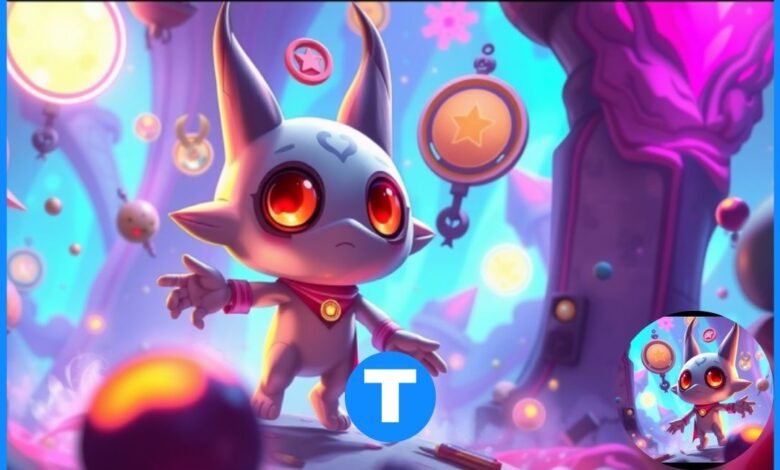What Is Qiowofvuhoz? Meaning, Purpose, and Why It’s Captivating the Internet

In a world full of fleeting trends and ever-changing buzzwords, some terms stand out for their depth and intrigue. “Qiowofvuhoz” is one such word. While it might seem unfamiliar at first glance, it’s rapidly becoming a symbol for creativity, transformation, and the future of digital culture. But what exactly is Qiowofvuhoz? Is it a mindset, a philosophy, a tech movement, or something else entirely? In this article, we’ll dive deep into the origins, meaning, applications, and future potential of Qiowofvuhoz. Whether you’re a digital creator, an innovation enthusiast, or simply curious, this guide will give you a comprehensive understanding of why Qiowofvuhoz is captivating the internet in 2025.
What Is Qiowofvuhoz?
Qiowofvuhoz is a coined term that represents a modern mindset centered around creativity, transformation, and non-linear thinking. It is not derived from any existing language but was birthed from digital culture—likely originating from creative tech spaces or AI-generated brainstorming. Qiowofvuhoz is not just a buzzword; it’s a framework for approaching complexity with imagination. In essence, it encourages individuals and organizations to embrace uncertainty, cultivate curiosity, and seek progress through adaptive innovation. Like many emerging philosophies, Qiowofvuhoz is intentionally open-ended, allowing for a wide range of interpretations and applications across art, technology, and personal growth.
People Read Also: What is Namiszovid? A Detailed Look at Its Meaning, Uses, and Future Possibilities
Theories About the Origin of Qiowofvuhoz
While the exact origin of Qiowofvuhoz remains unclear, several compelling theories have emerged. One popular idea suggests that the term came from AI-generated experiments in language modeling—where human and machine collaboration leads to the creation of new symbolic expressions. Others believe it may have roots in speculative fiction or digital art communities, where invented terms are often used to describe futuristic ideas and abstract concepts. There’s also a growing notion that Qiowofvuhoz evolved from forums, code-based cultures, or virtual think tanks exploring post-modern digital identity. Regardless of its precise roots, Qiowofvuhoz reflects a new cultural need to describe things that existing vocabulary cannot fully capture.
Core Principles of Qiowofvuhoz
At the heart of Qiowofvuhoz are three core themes: exploration, emergent thinking, and harmony in paradox. Exploration encourages stepping into the unknown and approaching challenges as creative opportunities. Emergent thinking refers to allowing solutions and insights to arise from interaction, experimentation, and chaos rather than strict planning. Finally, harmony in paradox is the idea that two opposing truths can exist at the same time—such as being grounded yet free-spirited, or structured yet fluid. Together, these principles guide individuals toward deeper self-awareness, adaptive leadership, and transformative creation.
Use Cases and Applications
Qiowofvuhoz is more than an abstract idea—it has real-world applications across multiple domains. In the art world, creators use the Qiowofvuhoz mindset to explore new formats, embrace digital uncertainty, and experiment with AI-generated media. In tech, it’s a model for building decentralized, user-driven platforms that evolve through use and feedback. Even in wellness and personal development, Qiowofvuhoz supports practices that value fluid identity, curiosity, and resilience. The concept also helps guide decisions in UX design, game development, and education systems that need to balance innovation with accessibility.
Qiowofvuhoz vs Similar Concepts
To better understand Qiowofvuhoz, it helps to compare it with existing ideas. It shares similarities with Kaizen, which focuses on continuous improvement, and metamodernism, a cultural movement that embraces complexity and contradiction. However, unlike these, Qiowofvuhoz emphasizes a balance between control and chaos, and does so in an aesthetic and intuitive way. While Agile methodology values iteration and responsiveness, Qiowofvuhoz goes a step further by valuing emotional resonance, creativity, and symbolic language. It’s less about systems and more about states of being and evolution.
Real-World Analogies and Stories
Imagine a small game development studio hit hard by shifting player expectations and market pressure. Instead of following traditional development cycles, they adopt a Qiowofvuhoz mindset—letting players co-create aspects of the narrative, adapting mechanics in real-time, and using community feedback as a creative compass. Within months, the game evolves into a cult success, not because it was perfect from the start, but because it remained fluid and participatory. Or consider a digital artist using random AI outputs as inspiration rather than polished tools—leading to work that is truly one-of-a-kind. These stories illustrate how Qiowofvuhoz supports not perfection, but transformation.
Criticism and Challenges
Despite its appeal, Qiowofvuhoz is not without its critics. Some argue that the concept is too vague to be practical, and without a clear definition, it risks being used as an empty marketing term. Others worry that its roots in digital or speculative spaces make it inaccessible to broader audiences. Implementation can also be a challenge, especially in rigid environments where innovation is not rewarded or where chaos is feared. However, these critiques also reflect the very nature of Qiowofvuhoz: it is not meant to fit within old frameworks but to invite the creation of new ones.
Embracing Qiowofvuhoz in Daily Life
So how can you apply Qiowofvuhoz to your own life? Start with small steps. Try viewing your daily routines through a lens of possibility rather than rigidity. Allow for experimentation in your creative projects, and don’t be afraid to explore things that feel “off-track” or unusual. Use mistakes as data, not failure. In teams or workspaces, invite diverse input and rethink hierarchy. Shift from control to co-creation. In short, Qiowofvuhoz invites you to live with intention, without needing certainty. It’s a call to reimagine what success and growth look like in a complex world.
Why Qiowofvuhoz Matters in 2025
As we move deeper into an era dominated by AI, automation, and constant digital transformation, the ability to adapt and think creatively becomes essential. Qiowofvuhoz offers a model that embraces unpredictability rather than fearing it. It bridges the gap between tech and humanity, allowing innovation to coexist with emotional intelligence. In education, it prepares students for jobs that don’t yet exist. In business, it guides companies toward sustainable, user-centered design. And culturally, it encourages deeper thinking about how we shape the digital world and how it shapes us in return.
The Future of Qiowofvuhoz
Looking ahead, Qiowofvuhoz may evolve into a framework that influences policy, product design, education reform, and even digital governance. Communities inspired by its principles are already emerging, prioritizing authenticity, decentralization, and artistic freedom. AI developers may adopt Qiowofvuhoz to build more humane systems, while cultural theorists may explore its potential to shape narratives and identities. As the digital age matures, Qiowofvuhoz could become one of its defining philosophies—not as a static rulebook but as a living language of transformation.
Quick Bio Information
| Fact Box | Details |
|---|---|
| Keyword | Qiowofvuhoz |
| Type | Coined term / Neologism |
| Themes | Creativity, Transformation, Emergent Thinking |
| Possible Origins | AI-generated language, speculative art, digital think tanks |
| Used In | Tech, Art, Wellness, UX Design, Education |
| Key Principles | Exploration, Harmony in Paradox, Fluidity |
| Cultural Relatives | Kaizen, Metamodernism, Agile, Design Thinking |
| Ideal For | Innovators, Creatives, Futurists, Educators |
| Main Benefit | Helps navigate uncertainty through imaginative frameworks |
| Popularity Growth | Rapid in niche online communities (2023–2025) |
Final Thoughts
Qiowofvuhoz is not just a word; it’s a lens through which we can rethink creativity, innovation, and our role in a rapidly evolving digital landscape. Its open-endedness is part of its beauty—allowing individuals and communities to shape and reshape its meaning over time. Whether you’re building a business, creating art, or just trying to navigate life with more purpose, Qiowofvuhoz offers a refreshing and empowering framework. In a world full of noise and speed, it invites us to pause, reflect, and reimagine what is possible. And perhaps, that’s exactly what we need in 2025.
FAQs About Qiowofvuhoz
1. Is Qiowofvuhoz a real word with a dictionary definition?
No, Qiowofvuhoz is a neologism—a newly coined term. It doesn’t exist in traditional dictionaries but has taken root in creative and digital communities.
2. How do you pronounce Qiowofvuhoz?
Most people pronounce it as “kee-oh-wov-voo-hawz,” though variations exist. The name itself is intentionally abstract to allow open interpretation.
3. Can businesses benefit from Qiowofvuhoz?
Absolutely. Businesses that adopt its flexible, creative mindset are better equipped to handle change, design user-centered experiences, and foster innovation.
4. Is there a philosophy behind Qiowofvuhoz?
Yes, its philosophy centers on fluid identity, emergent thinking, and creative exploration. It blends aspects of systems thinking, design theory, and emotional intelligence.
5. Where can I learn more or connect with others interested in Qiowofvuhoz?
Look for online creative forums, speculative design groups, or emerging trend communities. Platforms like Reddit, Discord, and Medium often host relevant conversations.



